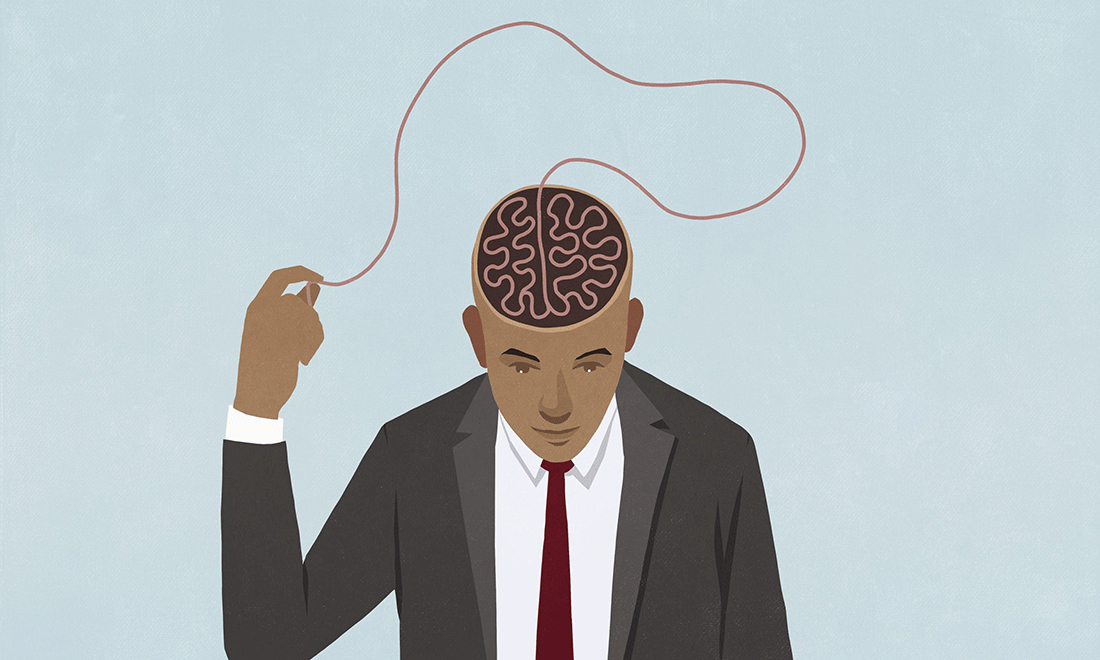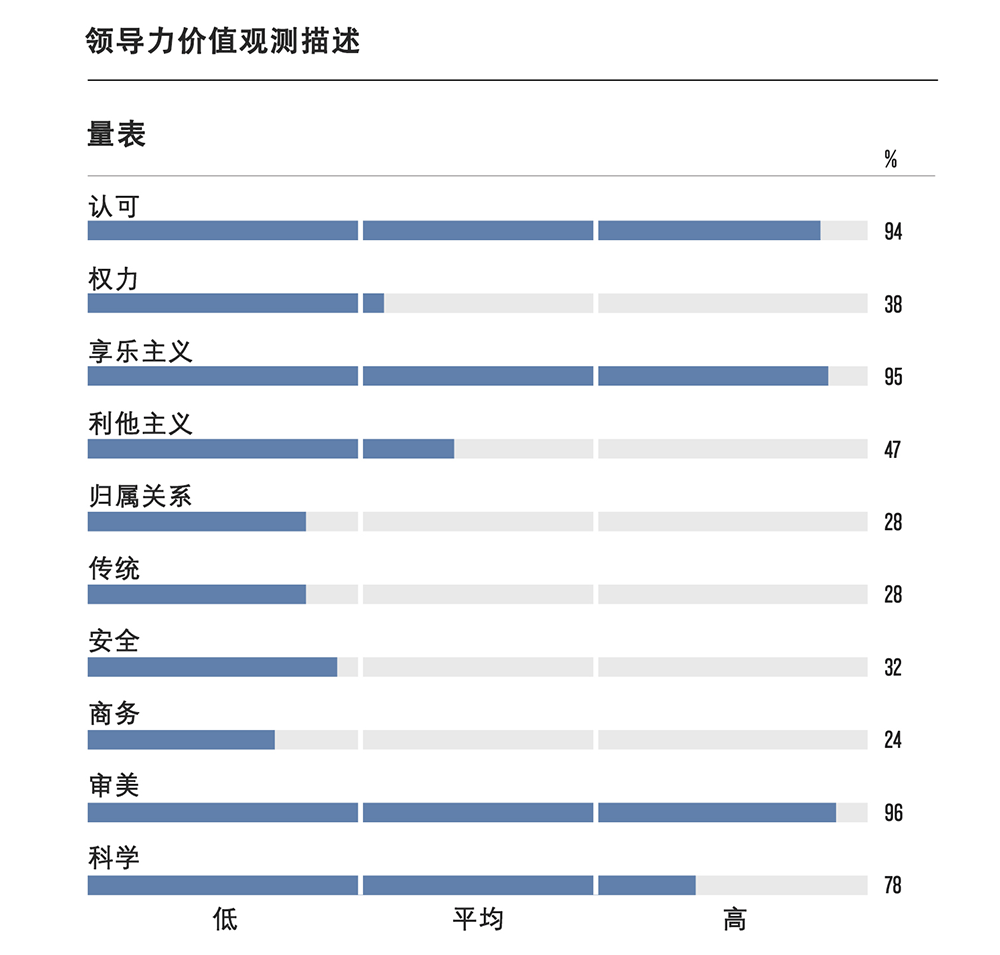你的性格能担任《财富》美国500强的CEO吗?

霍根测评系统公司(Hogan Assessment Systems)的互动解决方案副总裁杰基·萨姆告诉我:“这可能会让人感到不舒服。”近两个半小时的线上会议已经进行了大约40分钟,会上我们分析了我上周完成的三项性格和发展测试的结果。
在会议结束时,萨姆将讲述“特雷的故事”(正如她所讲述的那样),就像她过去每天与那些被考虑担任领导职务的高管们进行一对一的会谈一样。
虽然没有人邀请我担任一家价值数十亿美元的全球性企业的首席执行官,但这并不妨碍我偶尔有这样的想法:“他们应该让我来经营这家公司。”因此,我决定测试一下自己是否有能力领导一家庞大的企业。
在许多圈子里,霍根测评被认为是帮助各大公司和猎头评估首席执行官候选人是否具备掌舵所需的个性和品格的行业标准。这项测试是由总部位于美国俄克拉荷马州的人力资源咨询公司霍根测评系统公司在20世纪80年代开发的,它利用数据科学与心理分析相结合的方法,在深入的性格测试基础上预测测试者的工作表现。海德思哲国际咨询公司(Heidrick & Struggles)和罗盛咨询(Russell Reynolds)等猎头招聘公司,以及《财富》美国500强公司的董事会,都将这些结果(作为一系列测评的一部分)用于继任决策。
萨姆说:“性格测试与认知能力或其他能力测试一样,都能够预测表现。”
霍根测评过程(萨姆让我经历的)包括三项测试,进行综合分析后,就可以相当全面地了解该高管。有些高管在与高管教练合作的同时,多次参加测评,以了解自己在哪些方面需要改进,从而更好地满足公司的领导力需求。这一过程可能会持续数月或数年,具体取决于继任时间。
“它会深入到你性格和个性的方方面面。我们认为,如果你轻松完成测评,那么你可能就无法实现成长;如果我们告诉你一堆你已经知道的关于自己的特征,让你感觉飘飘然,那么我们就徒劳无功。”萨姆表示。
我完成了三项测评,花了一个多小时。每项测评的平均时间是12分钟到15分钟,但我承认我花了更长的时间,因为我在做笔记,而且过度思考某些提示。
霍根测评与DiSC性格测试和迈尔斯-布里格斯类型指标(MBTI)性格测试等其他行为测评相差无几。但是,霍根测评使用的不是“是”或“否”的问题,而是诸如“我经常想知道我是如何走到今天这步田地的”这样的表述,候选人能够在“非常同意”到“非常不同意”之间进行选择。
测评中的其他问题还包括:“总的来说,我有时会对一些事情感到恼火。”“就大多数事情而言,我做得比我认识的几乎所有人都好。”“我往往更关注自己犯的错误,而不是取得的成就。”“凭借三寸不烂之舌,我几乎可以从所有的困境中解脱出来。”“我服务的大多数领导都缺乏领导能力。”
例如,MBTI性格测试把我归类为INTJ-T型人格,而霍根测评则将结果细分为不同的量表,比如交际、认可或审美。有28个量表被细分为更详尽的子量表,训练有素的心理学家用这些量表来推断高管的性格、领导能力和人际关系技巧。例如,我的报告显示我的认可度得分很高,这表明我往往渴望因为成就而获得赞扬,这种欲望能够激励我继续奋勇向前,从而成为人们关注的焦点,并一举成名。

三项评估里的第一项,即人格量表,被霍根称为“光明面测评”。人格量表测评的是你处于最佳状态时的表现——整夜安眠,没有压力,精力充沛。第二项是发展量表,另外一种说法是“阴暗面量表”。发展量表测评的是你处于最糟糕状态时的表现。最后一项是动机、价值观和偏好量表,旨在了解你的动力和目标。
萨姆说,这些问题被设计得很难钻空子。她解释道:“如果问题是‘我有雄心壮志:是还是否’,那么很容易就可以看出问题设计者的意图。但我们可能会问你这样的问题:‘除非我比赛获胜了,否则我很难享受比赛过程。’这让我们对你的抱负有所了解。”
我非常认真地接受了测评。我通常不接受性格测试——尽管我的伴侣喜欢九型人格测试——但这是为了工作,而且测评我的人的本职工作是分析首席执行官的性格特征。更何况,萨姆说这种测评一般要花费公司1,000美元左右。
首先,我关掉了正在播放的《纽约娇妻》(Real Housewives of New York)。坐在沙发上,我打开了霍根公司代表发给我的电子邮件,里面有三项测评的链接以及我的临时霍根测评用户名和密码。大多数高管也是通过线上方式来完成这些测评的,不过我不知道他们更喜欢哪部《娇妻》系列剧集。萨姆说,有些测评是在有人监督的情况下完成的,但这种情况已经越来越少了。不过,为避免分心,她建议人们在日程表上安排好时间以获得最准确的结果。我参加测试时很紧张,但这并不是因为问题很难回答。我希望我的答案尽可能诚实,以保证新闻报道的完整性。
通常情况下,我的做法是深入阅读问题,目的不是钻空子,而是真正理解问题的设计初衷。我是典型的多虑者,这导致我预测很多问题的设计初衷。问我“在我看来,不喝酒的人不值得信赖”,是想让我承认自己是个酒鬼吗?或是仅仅是为了测试我有多不信任他人?还是说这道题可能是在深入研究我的社会关系?关于我是否会成为一名有效的领导者,这道题能够说明什么?
后一个问题很难回答。
首席执行官的工作很复杂,除了性格之外,成功与否还受许多因素影响。此外,萨姆说,除了提高盈利能力和股东价值之外,根本没有其他很好的方法来衡量首席执行官的业绩。但她指出,在较低的层级上,该组织拥有更可靠的数据。比如,她说,公司的数据显示,根据霍根测评招聘的公交车司机发生事故的可能性降低了60%。
海德思哲国际咨询公司首席执行官和董事会事务合伙人特蕾莎·文森表示,她将霍根测评视为“数据星系中的一颗恒星”,这意味着它是众多考虑因素中的一项考虑因素。
“特雷的故事”
虽然不愿承认,但我的霍根测评准确无误。我的爱人读到萨姆对我的侧写时(从全局角度思考给出的侧写),甚至惊讶得倒抽了一口气(萨姆从未见过我,只看到了我的回答提供的图表和数据点)。
萨姆告诉我:“你享受生活、寻找乐趣的愿望有时可能会因为你想让别人了解、发现和/或认可你的成就而受到阻碍、破坏或威胁。当你感到压力、无聊、不堪重负或筋疲力尽时,你很容易退缩、远离他人,或者想方设法把他人从你身边推开。”
她继续说道:“这可能弄巧成拙,因为当你最需要别人的时候,或者当他们需要你的时候,你可能会退缩。”
不出所料,文森也看了我的测评结果,她开玩笑地说:“没有人会聘请你当首席执行官。”我的测评表明,我不适合在一家企业结构明确的成熟公司工作。根据文森和萨姆的测评分析,我不擅长与权威人士、既定结构、规则和程序打交道。
虽然我不会很快接替罗伯特·艾格[迪士尼公司(Disney)]或罗兹·布鲁尔[沃尔格林(Walgreens)],但还是有一线希望的。
萨姆说:“你的量表看起来与许多初创企业的创始及兼首席执行官并无二致,他们挑战现有的体制,打破传统,勇于冒险,开创了前所未有的局面。”她警告说,虽然这听起来不错,但作为一名领导者,我很可能会对流程和程序感到厌倦。
文森称,如果她是我的引路人,她就会寻找一家需要扭亏为盈的公司,或是一家陷入困境和瘫痪,因此需要果断而有创造力的思考者的公司。但即便如此,根据我的测评,我的性格量表表明,我可能会觉得这很有挑战性,因为我不喜欢繁文缛节。文森说这很好。她推测说:“你是一个思维较为狭隘而认知能力较强的人。”
尽管测评据称很准确,但公司只是将其作为继任等式中的一个要素。萨姆指出,霍根测评系统公司甚至不会在没有了解来龙去脉的情况下向董事会提供原始报告,因为他们的结论可能不够全面。
这些结果可以说明一个人可能会如何领导、激励员工,并与员工和其他企业利益相关者沟通和建立联系。但文森指出:“如果想要[继任计划]完美无暇,就应该采用多管齐下的方式。”她通过360次访谈、模拟、咨询电话以及与高管长达数小时的一对一会谈来了解他们的工作方式。
高管选拔过程要越过层层关卡,我只是越过了一层关卡,结果表明我并不适合当《财富》美国500强公司的首席执行官。但如今,判断谁适合担任首席执行官只会变得更加困难。
萨姆说:“我们对首席执行官的期望是不可能实现的。如果你看看所有这些《财富》美国500强公司的领导能力模型,他们希望你鱼与熊掌兼得:刚柔并济,对每个人都面面俱到,但违背了人类的本性。领导者被要求达到这些不可能达到的标准,因此,大多数人都注定会一败涂地。”(财富中文网)
译者:中慧言-王芳
霍根测评系统公司(Hogan Assessment Systems)的互动解决方案副总裁杰基·萨姆告诉我:“这可能会让人感到不舒服。”近两个半小时的线上会议已经进行了大约40分钟,会上我们分析了我上周完成的三项性格和发展测试的结果。
在会议结束时,萨姆将讲述“特雷的故事”(正如她所讲述的那样),就像她过去每天与那些被考虑担任领导职务的高管们进行一对一的会谈一样。
虽然没有人邀请我担任一家价值数十亿美元的全球性企业的首席执行官,但这并不妨碍我偶尔有这样的想法:“他们应该让我来经营这家公司。”因此,我决定测试一下自己是否有能力领导一家庞大的企业。
在许多圈子里,霍根测评被认为是帮助各大公司和猎头评估首席执行官候选人是否具备掌舵所需的个性和品格的行业标准。这项测试是由总部位于美国俄克拉荷马州的人力资源咨询公司霍根测评系统公司在20世纪80年代开发的,它利用数据科学与心理分析相结合的方法,在深入的性格测试基础上预测测试者的工作表现。海德思哲国际咨询公司(Heidrick & Struggles)和罗盛咨询(Russell Reynolds)等猎头招聘公司,以及《财富》美国500强公司的董事会,都将这些结果(作为一系列测评的一部分)用于继任决策。
萨姆说:“性格测试与认知能力或其他能力测试一样,都能够预测表现。”
霍根测评过程(萨姆让我经历的)包括三项测试,进行综合分析后,就可以相当全面地了解该高管。有些高管在与高管教练合作的同时,多次参加测评,以了解自己在哪些方面需要改进,从而更好地满足公司的领导力需求。这一过程可能会持续数月或数年,具体取决于继任时间。
“它会深入到你性格和个性的方方面面。我们认为,如果你轻松完成测评,那么你可能就无法实现成长;如果我们告诉你一堆你已经知道的关于自己的特征,让你感觉飘飘然,那么我们就徒劳无功。”萨姆表示。
我完成了三项测评,花了一个多小时。每项测评的平均时间是12分钟到15分钟,但我承认我花了更长的时间,因为我在做笔记,而且过度思考某些提示。
霍根测评与DiSC性格测试和迈尔斯-布里格斯类型指标(MBTI)性格测试等其他行为测评相差无几。但是,霍根测评使用的不是“是”或“否”的问题,而是诸如“我经常想知道我是如何走到今天这步田地的”这样的表述,候选人能够在“非常同意”到“非常不同意”之间进行选择。
测评中的其他问题还包括:“总的来说,我有时会对一些事情感到恼火。”“就大多数事情而言,我做得比我认识的几乎所有人都好。”“我往往更关注自己犯的错误,而不是取得的成就。”“凭借三寸不烂之舌,我几乎可以从所有的困境中解脱出来。”“我服务的大多数领导都缺乏领导能力。”
例如,MBTI性格测试把我归类为INTJ-T型人格,而霍根测评则将结果细分为不同的量表,比如交际、认可或审美。有28个量表被细分为更详尽的子量表,训练有素的心理学家用这些量表来推断高管的性格、领导能力和人际关系技巧。例如,我的报告显示我的认可度得分很高,这表明我往往渴望因为成就而获得赞扬,这种欲望能够激励我继续奋勇向前,从而成为人们关注的焦点,并一举成名。
三项评估里的第一项,即人格量表,被霍根称为“光明面测评”。人格量表测评的是你处于最佳状态时的表现——整夜安眠,没有压力,精力充沛。第二项是发展量表,另外一种说法是“阴暗面量表”。发展量表测评的是你处于最糟糕状态时的表现。最后一项是动机、价值观和偏好量表,旨在了解你的动力和目标。
萨姆说,这些问题被设计得很难钻空子。她解释道:“如果问题是‘我有雄心壮志:是还是否’,那么很容易就可以看出问题设计者的意图。但我们可能会问你这样的问题:‘除非我比赛获胜了,否则我很难享受比赛过程。’这让我们对你的抱负有所了解。”
我非常认真地接受了测评。我通常不接受性格测试——尽管我的伴侣喜欢九型人格测试——但这是为了工作,而且测评我的人的本职工作是分析首席执行官的性格特征。更何况,萨姆说这种测评一般要花费公司1,000美元左右。
首先,我关掉了正在播放的《纽约娇妻》(Real Housewives of New York)。坐在沙发上,我打开了霍根公司代表发给我的电子邮件,里面有三项测评的链接以及我的临时霍根测评用户名和密码。大多数高管也是通过线上方式来完成这些测评的,不过我不知道他们更喜欢哪部《娇妻》系列剧集。萨姆说,有些测评是在有人监督的情况下完成的,但这种情况已经越来越少了。不过,为避免分心,她建议人们在日程表上安排好时间以获得最准确的结果。我参加测试时很紧张,但这并不是因为问题很难回答。我希望我的答案尽可能诚实,以保证新闻报道的完整性。
通常情况下,我的做法是深入阅读问题,目的不是钻空子,而是真正理解问题的设计初衷。我是典型的多虑者,这导致我预测很多问题的设计初衷。问我“在我看来,不喝酒的人不值得信赖”,是想让我承认自己是个酒鬼吗?或是仅仅是为了测试我有多不信任他人?还是说这道题可能是在深入研究我的社会关系?关于我是否会成为一名有效的领导者,这道题能够说明什么?
后一个问题很难回答。
首席执行官的工作很复杂,除了性格之外,成功与否还受许多因素影响。此外,萨姆说,除了提高盈利能力和股东价值之外,根本没有其他很好的方法来衡量首席执行官的业绩。但她指出,在较低的层级上,该组织拥有更可靠的数据。比如,她说,公司的数据显示,根据霍根测评招聘的公交车司机发生事故的可能性降低了60%。
海德思哲国际咨询公司首席执行官和董事会事务合伙人特蕾莎·文森表示,她将霍根测评视为“数据星系中的一颗恒星”,这意味着它是众多考虑因素中的一项考虑因素。
“特雷的故事”
虽然不愿承认,但我的霍根测评准确无误。我的爱人读到萨姆对我的侧写时(从全局角度思考给出的侧写),甚至惊讶得倒抽了一口气(萨姆从未见过我,只看到了我的回答提供的图表和数据点)。
萨姆告诉我:“你享受生活、寻找乐趣的愿望有时可能会因为你想让别人了解、发现和/或认可你的成就而受到阻碍、破坏或威胁。当你感到压力、无聊、不堪重负或筋疲力尽时,你很容易退缩、远离他人,或者想方设法把他人从你身边推开。”
她继续说道:“这可能弄巧成拙,因为当你最需要别人的时候,或者当他们需要你的时候,你可能会退缩。”
不出所料,文森也看了我的测评结果,她开玩笑地说:“没有人会聘请你当首席执行官。”我的测评表明,我不适合在一家企业结构明确的成熟公司工作。根据文森和萨姆的测评分析,我不擅长与权威人士、既定结构、规则和程序打交道。
虽然我不会很快接替罗伯特·艾格[迪士尼公司(Disney)]或罗兹·布鲁尔[沃尔格林(Walgreens)],但还是有一线希望的。
萨姆说:“你的量表看起来与许多初创企业的创始及兼首席执行官并无二致,他们挑战现有的体制,打破传统,勇于冒险,开创了前所未有的局面。”她警告说,虽然这听起来不错,但作为一名领导者,我很可能会对流程和程序感到厌倦。
文森称,如果她是我的引路人,她就会寻找一家需要扭亏为盈的公司,或是一家陷入困境和瘫痪,因此需要果断而有创造力的思考者的公司。但即便如此,根据我的测评,我的性格量表表明,我可能会觉得这很有挑战性,因为我不喜欢繁文缛节。文森说这很好。她推测说:“你是一个思维较为狭隘而认知能力较强的人。”
尽管测评据称很准确,但公司只是将其作为继任等式中的一个要素。萨姆指出,霍根测评系统公司甚至不会在没有了解来龙去脉的情况下向董事会提供原始报告,因为他们的结论可能不够全面。
这些结果可以说明一个人可能会如何领导、激励员工,并与员工和其他企业利益相关者沟通和建立联系。但文森指出:“如果想要[继任计划]完美无暇,就应该采用多管齐下的方式。”她通过360次访谈、模拟、咨询电话以及与高管长达数小时的一对一会谈来了解他们的工作方式。
高管选拔过程要越过层层关卡,我只是越过了一层关卡,结果表明我并不适合当《财富》美国500强公司的首席执行官。但如今,判断谁适合担任首席执行官只会变得更加困难。
萨姆说:“我们对首席执行官的期望是不可能实现的。如果你看看所有这些《财富》美国500强公司的领导能力模型,他们希望你鱼与熊掌兼得:刚柔并济,对每个人都面面俱到,但违背了人类的本性。领导者被要求达到这些不可能达到的标准,因此,大多数人都注定会一败涂地。”(财富中文网)
译者:中慧言-王芳
“It may get uncomfortable,” Jackie Sahm, vice president of interactive solutions at Hogan Assessment Systems, tells me. We’re roughly 40 minutes into our nearly two-and-a-half-hour virtual meeting analyzing the results of three personality and development assessments I completed the previous week.
At the end of the session, Sahm will recount “the story of Trey,” as she puts it, just as she used to when her day-to-day consisted of conducting one-on-one meetings with senior executives being considered for the corner office.
While no one’s asking me to be CEO of a global multi-billion dollar business operation, that hasn’t stopped me from thinking once or twice: “They should just let me run the company.” So, I decided to test whether I have what it takes to lead a sprawling organization.
In many circles, Hogan Assessments is considered the industry standard in helping companies and executive search firms assess whether a CEO candidate has the right personality and character to take the helm. The test, developed in the ’80s by the Oklahoma-based HR consulting firm Hogan Assessment Systems, uses data science paired with psychoanalysis to predict job performance based on in-depth personality assessments. Executive recruiting firms, such as Heidrick & Struggles and Russell Reynolds, and boards at Fortune 500 companies use the results in succession decisions as part of a web of assessments, as I’ve previously reported.
“Personality predicts performance just as well as cognitive ability or other abilities tests,” Sahm says.
Hogan’s assessment process—the one Sahm put me through—includes three tests that, when analyzed together, paint a fairly thorough picture of an executive. Some executives take the assessments multiple times while working with executive coaches to learn where they need to improve to best meet the company’s leadership needs. That process may take place over months or years, depending on the timing for succession.
“It gets into the crevices, the nooks and crannies of your character and personality. We think if you’re not uncomfortable, you’re probably not growing, and if we tell you a bunch of things you already knew about yourself that make you feel really good, we’ve not really done our job,” Sahm says.
I completed the three assessments, which took me just over one hour. The average is 12 to 15 minutes per assessment, but I admittedly took longer because I was jotting down notes and overthinking some of the prompts.
Hogan’s assessments are not too dissimilar to other behavioral assessments, like DiSC and Myers Briggs. But rather than yes or no questions, Hogan’s tests use statements such as, “I often wonder how I got to be the way I am,” to which candidates select a range spanning “strongly agree” to “strongly disagree.”
Other inquiries featured on the assessment include: “I sometimes get annoyed at things in general.” “I do most things better than almost everyone I know.” “I tend to focus on my mistakes more than my successes.” “I can talk my way out of almost anything.” “Most of the people I’ve worked for are incompetent.”
For example, Myers Briggs casts me as an INTJ-T, whereas Hogan breaks down results into different scales like sociability, recognition, or aesthetics. There are 28 scales broken down into more detailed subscales trained psychologists use to make inferences about executives’ personalities, leadership capabilities, and relational skills. My report, for instance, shows a high recognition score, suggesting that I tend to be motivated by a desire to be praised and celebrated for my accomplishments, be in the spotlight, and become famous.
The first of the three assessments, the personality inventory, is what Hogan calls the bright side assessment. It measures who you are when you’re at your best—after a full night’s sleep, stress-free, and firing on all cylinders. The second is a development survey, or, ominously put, the dark side profile. It measures who you are at your worst. Last is the motives, values, and preferences inventory, which seeks to capture what impels you and your purpose.
Sahm says the questions are designed to be difficult to game. “If the question says, ‘I am ambitious: true or false,’ it’s pretty easy to tell what we’re trying to get at,” she explains. “But we may ask you a question like, ‘It’s hard for me to enjoy a game unless I win.’ That gives us some insight into your ambition.”
I took the assessment incredibly seriously. I don’t typically subscribe to personality tests—though my partner loves an enneagram—but this was for work, and I would be assessed by someone whose job it is to analyze CEO personality profiles. Not to mention, Sahm says the assessment typically runs companies around $1,000.
First, I turned off the Real Housewives of New York episode playing in the background. From my couch, I opened the email a Hogan representative sent me with a link to my three assessments and my temporary Hogan ID and password. Most executives also complete these tests virtually, though I can’t say which Real Housewives series they prefer. Some tests are done in a supervised setting, but it’s become rarer, Sahm says. However, she advises people to block time on their calendars to avoid distractions and get the most accurate results. I was nervous about taking the test, though, not because the questions were tough. I wanted my answers to be as honest as possible, for journalistic integrity.
Typically, my MO is to read deep into questions, not to game the system, but to truly understand what it’s asking. I’m your classic overthinker, which led to second-guessing more than a few questions. Was asking me whether, “In my view, a person who doesn’t drink can’t be trusted,” trying to get me to admit to being a lush? Was it simply about how skeptical I am of people? Or was it possibly digging into my social interactions? And what would that say about whether I’d be an effective leader?
The latter question is tough to answer.
The CEO job is complex, with many factors beyond personality contributing to success. Plus, there simply aren’t great measures of a CEO’s performance outside of driving profitability and shareholder value, Sahm says. But at lower levels, she notes, the organization has more robust data. For example, she says the firm can point to data showing that bus drivers hired using Hogan are 60% less likely to have an accident.”
Teraesa Vinson, a partner at Heidrick & Struggles’ CEO and board of directors practice, says she uses Hogan assessments as “a star in a data galaxy,” meaning it’s one factor among many considerations.
The “story of Trey”
I hate to admit it, but my Hogan assessment was spot on. My partner even gasped reading the 30,000-foot view Sahm wrote, having never met me and with just the graphs and data points my answers provided.
“Your desire to enjoy and find pleasure in life may be thwarted, undermined, or threatened at times by a desire to be known, visible, and/or recognized for your achievements,” Sahm tells me. “When you are stressed, bored, overwhelmed, or otherwise depleted, you are prone to withdraw and move away from others or find ways to push them away from you.”
She continues: “This can be a self-defeating pattern, as you may retreat from others when you need them most—or when they need you.”
Unsurprisingly, “nobody should hire you to be their CEO,” says Vinson, who also looked at my assessment results, in jest. My assessment suggests I’m not a good fit for a mature company with a well-defined corporate structure. I don’t do well with authority, set constructs, rules, and procedures, according to Vinson and Sahm’s assessment analysis.
Although I won’t be succeeding Bob Iger at Disney or Roz Brewer at Walgreens anytime soon, there is a silver lining.
“Your profile looks not unlike many startup founder-CEOs’ where they challenged the establishment, broke from tradition, did something risky, and created something that didn’t exist before,” Sahm says. While that sounds nice enough, as a leader, I’d likely get bored with processes and procedures, she warns.
Vinson says, were she advising me, she’d look for a company that needs a turnaround or a distressed, paralyzed organization that could use a decisive and creative thinker. But even then, my personality profile suggests I might find it challenging because I don’t care to get bogged down with details, per my assessment. Vinson says that’s fine. “You’re someone who thinks more zoomed out and is cognitively facile,” she surmises.
Despite the assessment’s purported accuracy, companies use it as just one element of the succession equation. Sahm says Hogan doesn’t even give boards the raw reports without context because their takeaways might not provide the full picture.
The results are an indication of how someone might lead, engage with, inspire, and communicate with their employees and other corporate stakeholders. But Vinson notes that “if you’re doing [succession planning] right, it should be a multimodal approach.” She uses 360 interviews, simulations, reference calls, and hours worth of one-on-ones with executives to understand how they tick.
I jumped through one hoop in the C-suite selection process, and the results indicate I’m not Fortune 500 CEO material. But these days, discerning who is fit to be CEO has only gotten harder.
“We expect impossible things from CEOs. If you look at leadership competency models at all these Fortune 500 companies, they want you to be tall and short at the same time,” Sahm says. “They want you to be hard and soft; they want you to be everything to everyone, and that’s not how people are made. Leaders are held to these impossible standards, and most are set up to fail.”













